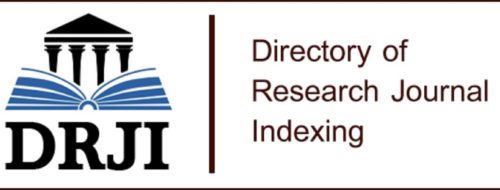Öz
Anahtar Kelimeler
Exchange Market Pressure Index Intervention Two Steps Least Square
Kaynakça
- AKÇORAOĞLU, Alpaslan; (2000), An Analysis of Exchange Market Pressure and Monetary Policy: Evidence From Turkey”, G.Ü. İktisadi ve İdari Bilimler Fakültesi Dergisi, 2(4)
- BAİG, Mirza Allim; V. NARASİMHAN ve M. RAMACHANDRAN; (2003), “Exchange Market Pressure and the Reserve Bank of India’s Intervention Activity”, Journal of Policy Modeling, 25(8), ss. 727-748.
- BİELECKİ, Szymon; (2005), “Exchange Market Pressure and Domestic Credit Evidence from Poland”, The Poznan University of Economics Review, 5(1), ss 20-36.
- BURDEKİN, Richard CK ve Paul BURKETT; (1990), “A re-examination of the Monetary Model of Exchange Market Pressure: Canada 1963-1988”, The Review of Economics and Statistics, 72(4), ss. 677-681.
- BURKETT, Paul ve Donald G. RİCHARDS; (1993), “Exchange Market Pressure in Paraguay, 1963–88: Monetary Disequilibrium Versus Global and Regional Dependency” Applied Economics, 25(8), ss.1053-1063.
- CAGAN, Philips; (1956), “The Monetary Dynamics of Hyperinflation”, in M.Friedman (ed.), Studies in the Quantity Theory of Money, Chicago, Univesity of Chicago Press, 25-117.
- CONNOLLY, Michael, and Jose Dantas Da SİLVEİRA; (1979), “Exchange Market Pressure in Postwar Brazil: An Application of The Girton-Roper Monetary Model”, The American Economic Review, 69(3), ss. 448-454.
- ÇETİNTAŞ, Hakan ve Hasan VERGİL; (2003), “Türkiye'de Kayıtdışı Ekonominin Tahmini”, Doğuş Üniversitesi Dergisi, 4(1), ss.15-30.
- DOUGHERTY, Christopher ; (2007), Introduction to Econometrics, Third Edition, Oxford University Press,
- EİCHENGREEN, Barry; Andrew K. ROSE ve Charles WYPLOSZ; (1996), “Contagious currency crises”, National Bureau of Economic Research, No. w5681
- GİRTON, Lance ve Don ROPER; (1977), “A Monetary Model of Exchange Market Pressure Applied to The Post-War Canadian Experience”, American Economic Review, 67(4), ss.537-548.
- GÖKSU, Gokhan; Eyup KADIOĞLU; ve Guray KÜÇÜKKOCAOĞLU; (2015), “Predicting Crises in Turkey Using an Exchange Market Pressure Model and Four-Way Decomposition Analysis of Gross Capital Flows” International Business Research, 8(11)
- FERİDUN Mete; (2009), “Determinants of Exchange Market Pressure in Turkey: An Econometric Investigation”, Emerging Markets Finance and Trade, 45(2), ss.65-81, DOI: 10.2753/REE1540-496X450204
- IWATA, Shigeru ve Evan TANNER; (2007) “Pick Your Poison: The Exchange Rate Regime and Capital Account Volatility in Emerging Markets”, Czech Journal of Economics and Finance (Finance a uver), 57(7-8), ss. 363-381.
- JEİSMAN, Shakila (2005), “Exchange Market Pressure in Australia”, Quarterly Journal of Business and Economics,44(1-2), ss. 13-27.
- KAMİNSKY, Graciela; Saul LİZONDO ve Carmen M. REİNHART; (1998), “Leading Indicators of Currency Crises”, Staff Papers, 45(1), ss.1-48.
- KATIRCIOĞLU Salih Turan, ve Mete FERİDUN; (2011), “Do Macroeconomic Fundamentals Affect Exchange Market Pressure? Evidence from Bounds Testing Approach for Turkey”, Applied Economics Letters, 18(3), ss. 295-300, DOI:10.1080/00036841003636110
- KIM, Inchul; (1985) “Exchange Market Pressure in Korea: An Asslication of the Girton-Roper Monetary Model”, Journal of Money, Credit and Banking, 17(2), ss.258-263
- KOHLSCHEEN, Emanuel; (2000), “Estimating Exchange Market Pressure and Intervention Activity”, Banco Central do Brasil, Working Paper Series, n 9.
- Lİ, Jie; (2012), “A Monetary Approach to the Exchange Market Pressure Index Under Capital Control”, Applied Economics Letters, 19(13), ss.1305-1309.
- MAH, Jai Sheen; (1995), “An Analysis of the Structural Change in the Exchange Market Pressure: Korea: 1980–89”, Applied Economics Letters, 2, ss. 80–82.
- MARK, Nelson, Chung; (2001), International Macroeconomics and Finance Theory and Empirical Methods, Blackwell Publisher
- MATHUR, Priya; (1999), “An Exchange Market Pressure Model for India” Indian Economic Review, Vol.XXXIV, n2, ss.127-148.
- MODESTE, Nelson C; (1981), “Exchange Market Pressure During the 1970s in Argentina: an Application of the Girton-Roper Monetary Model: a Note”, Journal of Money, Credit and Banking, 13(2), ss. 234-240.
- PARLAKTUNA, Inci; (2005), “Exchange Market Pressure in Turkey 1993–2004: an Application of the Girton–Roper Monetary Model” International Economic Journal, 19(1), ss. 51-62.
- SACHS, Jeffrey; Aaron TORNELL, and Andres VELASCO; (1996), “Financial Crises in Emerging Markets: the Lessons from 1995”, National Bureau of Economic Research, No. w5576
- STAWAREK, Daniel. (2007). “Estimation of the Exchange Market Pressure in the EU4 Countries: A model-dependent Approach”, Investment Management and Financial Innovations, 4(3), ss.80-94.
- TASLIM, Mohammad Ali; (2003), “A Monetary Approach to Exchange Market Disequilibrium in Australia: 1975–97” Australian Economic Papers, 42(2), ss.183-196.
- THORNTON, John; (1995), “Exchange Market Pressure in Costa Rica, 1986–92: an Application of the Girton–Roper Model” International Economic Journal, 9(1), ss. 67–72
- UĞURLU, Erginbay VE Emine Ebru AKSOY; (2017), “2008 Krizi Döneminde Türkiye'de Döviz Piyasası Baskısının İncelenmesi: Mevsimsel Eşbütünleşme Analizi”, Finans Politik & Ekonomik Yorumlar, 54(633), ss. 9-26.
- WEYMARK, Diana N.; (1995), “Estimating Exchange Market Pressure and the Degree of Exchange Market Intervention for Canada”, Journal of International Economics, 39 (3-4), ss. 273-295.
- WEYMARK, Diana N.; (1997), “Measuring Exchange Market Pressure and Intervention in Interdependent Economies: A Two-Country Model”, Review of International Economics, 5 (1), ss. 72-82.
- Weymark, Diana N.; (1998), “A General Approach to Measuring Exchange Market Pressure”, Oxford Economic Papers, 50 (1), ss. 106-121
Öz
Anahtar Kelimeler
Döviz Piyasası Baskı Endeksi Müdahale İki Aşamalı En Küçük Kareler
Kaynakça
- AKÇORAOĞLU, Alpaslan; (2000), An Analysis of Exchange Market Pressure and Monetary Policy: Evidence From Turkey”, G.Ü. İktisadi ve İdari Bilimler Fakültesi Dergisi, 2(4)
- BAİG, Mirza Allim; V. NARASİMHAN ve M. RAMACHANDRAN; (2003), “Exchange Market Pressure and the Reserve Bank of India’s Intervention Activity”, Journal of Policy Modeling, 25(8), ss. 727-748.
- BİELECKİ, Szymon; (2005), “Exchange Market Pressure and Domestic Credit Evidence from Poland”, The Poznan University of Economics Review, 5(1), ss 20-36.
- BURDEKİN, Richard CK ve Paul BURKETT; (1990), “A re-examination of the Monetary Model of Exchange Market Pressure: Canada 1963-1988”, The Review of Economics and Statistics, 72(4), ss. 677-681.
- BURKETT, Paul ve Donald G. RİCHARDS; (1993), “Exchange Market Pressure in Paraguay, 1963–88: Monetary Disequilibrium Versus Global and Regional Dependency” Applied Economics, 25(8), ss.1053-1063.
- CAGAN, Philips; (1956), “The Monetary Dynamics of Hyperinflation”, in M.Friedman (ed.), Studies in the Quantity Theory of Money, Chicago, Univesity of Chicago Press, 25-117.
- CONNOLLY, Michael, and Jose Dantas Da SİLVEİRA; (1979), “Exchange Market Pressure in Postwar Brazil: An Application of The Girton-Roper Monetary Model”, The American Economic Review, 69(3), ss. 448-454.
- ÇETİNTAŞ, Hakan ve Hasan VERGİL; (2003), “Türkiye'de Kayıtdışı Ekonominin Tahmini”, Doğuş Üniversitesi Dergisi, 4(1), ss.15-30.
- DOUGHERTY, Christopher ; (2007), Introduction to Econometrics, Third Edition, Oxford University Press,
- EİCHENGREEN, Barry; Andrew K. ROSE ve Charles WYPLOSZ; (1996), “Contagious currency crises”, National Bureau of Economic Research, No. w5681
- GİRTON, Lance ve Don ROPER; (1977), “A Monetary Model of Exchange Market Pressure Applied to The Post-War Canadian Experience”, American Economic Review, 67(4), ss.537-548.
- GÖKSU, Gokhan; Eyup KADIOĞLU; ve Guray KÜÇÜKKOCAOĞLU; (2015), “Predicting Crises in Turkey Using an Exchange Market Pressure Model and Four-Way Decomposition Analysis of Gross Capital Flows” International Business Research, 8(11)
- FERİDUN Mete; (2009), “Determinants of Exchange Market Pressure in Turkey: An Econometric Investigation”, Emerging Markets Finance and Trade, 45(2), ss.65-81, DOI: 10.2753/REE1540-496X450204
- IWATA, Shigeru ve Evan TANNER; (2007) “Pick Your Poison: The Exchange Rate Regime and Capital Account Volatility in Emerging Markets”, Czech Journal of Economics and Finance (Finance a uver), 57(7-8), ss. 363-381.
- JEİSMAN, Shakila (2005), “Exchange Market Pressure in Australia”, Quarterly Journal of Business and Economics,44(1-2), ss. 13-27.
- KAMİNSKY, Graciela; Saul LİZONDO ve Carmen M. REİNHART; (1998), “Leading Indicators of Currency Crises”, Staff Papers, 45(1), ss.1-48.
- KATIRCIOĞLU Salih Turan, ve Mete FERİDUN; (2011), “Do Macroeconomic Fundamentals Affect Exchange Market Pressure? Evidence from Bounds Testing Approach for Turkey”, Applied Economics Letters, 18(3), ss. 295-300, DOI:10.1080/00036841003636110
- KIM, Inchul; (1985) “Exchange Market Pressure in Korea: An Asslication of the Girton-Roper Monetary Model”, Journal of Money, Credit and Banking, 17(2), ss.258-263
- KOHLSCHEEN, Emanuel; (2000), “Estimating Exchange Market Pressure and Intervention Activity”, Banco Central do Brasil, Working Paper Series, n 9.
- Lİ, Jie; (2012), “A Monetary Approach to the Exchange Market Pressure Index Under Capital Control”, Applied Economics Letters, 19(13), ss.1305-1309.
- MAH, Jai Sheen; (1995), “An Analysis of the Structural Change in the Exchange Market Pressure: Korea: 1980–89”, Applied Economics Letters, 2, ss. 80–82.
- MARK, Nelson, Chung; (2001), International Macroeconomics and Finance Theory and Empirical Methods, Blackwell Publisher
- MATHUR, Priya; (1999), “An Exchange Market Pressure Model for India” Indian Economic Review, Vol.XXXIV, n2, ss.127-148.
- MODESTE, Nelson C; (1981), “Exchange Market Pressure During the 1970s in Argentina: an Application of the Girton-Roper Monetary Model: a Note”, Journal of Money, Credit and Banking, 13(2), ss. 234-240.
- PARLAKTUNA, Inci; (2005), “Exchange Market Pressure in Turkey 1993–2004: an Application of the Girton–Roper Monetary Model” International Economic Journal, 19(1), ss. 51-62.
- SACHS, Jeffrey; Aaron TORNELL, and Andres VELASCO; (1996), “Financial Crises in Emerging Markets: the Lessons from 1995”, National Bureau of Economic Research, No. w5576
- STAWAREK, Daniel. (2007). “Estimation of the Exchange Market Pressure in the EU4 Countries: A model-dependent Approach”, Investment Management and Financial Innovations, 4(3), ss.80-94.
- TASLIM, Mohammad Ali; (2003), “A Monetary Approach to Exchange Market Disequilibrium in Australia: 1975–97” Australian Economic Papers, 42(2), ss.183-196.
- THORNTON, John; (1995), “Exchange Market Pressure in Costa Rica, 1986–92: an Application of the Girton–Roper Model” International Economic Journal, 9(1), ss. 67–72
- UĞURLU, Erginbay VE Emine Ebru AKSOY; (2017), “2008 Krizi Döneminde Türkiye'de Döviz Piyasası Baskısının İncelenmesi: Mevsimsel Eşbütünleşme Analizi”, Finans Politik & Ekonomik Yorumlar, 54(633), ss. 9-26.
- WEYMARK, Diana N.; (1995), “Estimating Exchange Market Pressure and the Degree of Exchange Market Intervention for Canada”, Journal of International Economics, 39 (3-4), ss. 273-295.
- WEYMARK, Diana N.; (1997), “Measuring Exchange Market Pressure and Intervention in Interdependent Economies: A Two-Country Model”, Review of International Economics, 5 (1), ss. 72-82.
- Weymark, Diana N.; (1998), “A General Approach to Measuring Exchange Market Pressure”, Oxford Economic Papers, 50 (1), ss. 106-121
Ayrıntılar
| Birincil Dil | Türkçe |
|---|---|
| Bölüm | Makaleler |
| Yazarlar | |
| Yayımlanma Tarihi | 30 Haziran 2019 |
| Kabul Tarihi | 17 Şubat 2019 |
| Yayımlandığı Sayı | Yıl 2019 Sayı: 53 |
Cited By
Döviz Piyasası Baskı Endeksi ve Ticari Krediler İlişkisi: Türkiye Örneği
Anadolu İktisat ve İşletme Dergisi
https://doi.org/10.59293/anadoluiid.1272691
Ekonomik Stres Dönemlerinin Makroekonomik Göstergelerle Tahmininde Logit/Probit Model Kullanımına Yönelik Bir Uygulama
Afyon Kocatepe Üniversitesi Sosyal Bilimler Dergisi
https://doi.org/10.32709/akusosbil.883343













ERÜ İktisadi ve İdari Bilimler Fakültesi Dergisi 2021 | iibfdergi@erciyes.edu.tr
Bu eser Creative Commons Atıf-Gayri Ticari-Türetilemez 4.0 Uluslararası Lisansı ile lisanslanmıştır.


